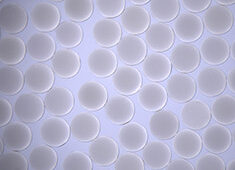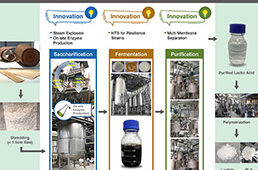 Researchers from North Carolina State Univ., the Univ. of North Carolina at Chapel Hill and Laser Zentrum Hannover have discovered that a naturally occurring compound can be incorporated into 3-D printing processes to create medical implants out of non-toxic polymers. The compound is riboflavin, which is better known as vitamin B2.
Researchers from North Carolina State Univ., the Univ. of North Carolina at Chapel Hill and Laser Zentrum Hannover have discovered that a naturally occurring compound can be incorporated into 3-D printing processes to create medical implants out of non-toxic polymers. The compound is riboflavin, which is better known as vitamin B2.
“This opens the door to a much wider range of biocompatible implant materials, which can be used to develop customized implant designs using 3-D printing technology,” says Dr. Roger Narayan, senior author of a paper describing the work and a prof. in the joint Biomedical Engineering Dept. at NC State and UNC-Chapel Hill.
The researchers in this study focused on a 3-D printing technique called two-photon polymerization, because this technique can be used to create small objects with detailed features—such as scaffolds for tissue engineering, microneedles or other implantable drug delivery devices.
Two-photon polymerization is a 3-D printing technique for making small-scale solid structures from many types of photoreactive liquid precursors. The liquid precursors contain chemicals that react to light, turning the liquid into a solid polymer. By exposing the liquid precursor to targeted amounts of light, the technique allows users to “print” 3-D objects.
Two-photon polymerization has its drawbacks, however. Most chemicals mixed into the precursors to make them photoreactive are also toxic, which could be problematic if the structures are used in a medical implant or are in direct contact with the body.
But now researchers have determined that riboflavin can be mixed with a precursor material to make it photoreactive. And riboflavin is both nontoxic and biocompatible—it’s a vitamin found in everything from asparagus to cottage cheese.
A paper on the research appears online in Regenerative Medicine.
Source: North Carolina State Univ.




